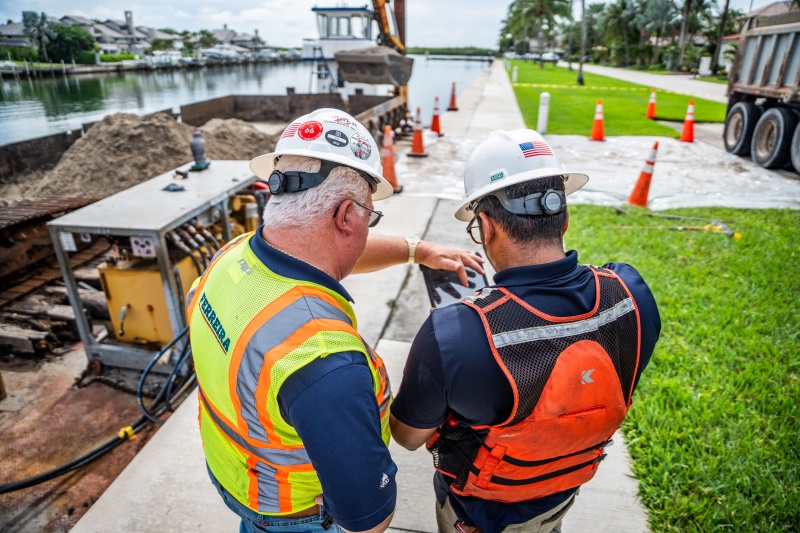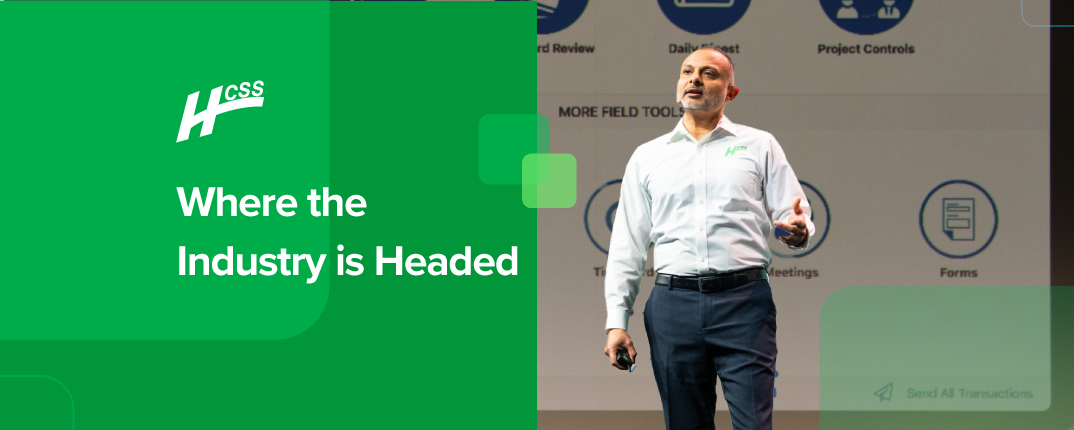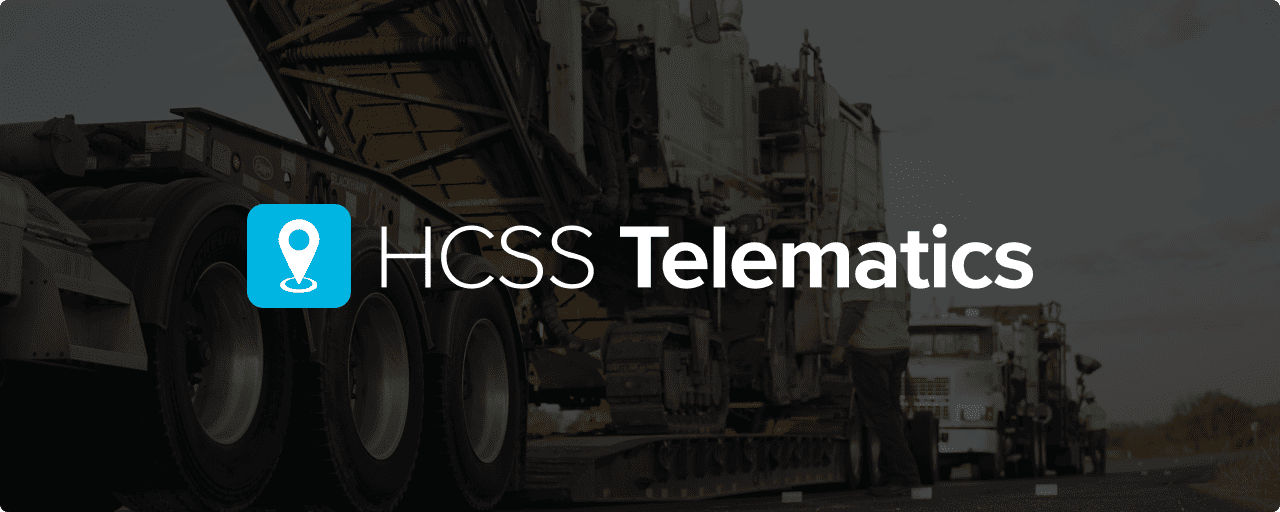The construction industry is constantly evolving, and as a leading provider of software solutions, HCSS must stay ahead of the curve. Relying on forward-thinking predictions and squashing potential problems before they happen is one of many keys to creating the software thousands of companies use daily.
With 2024 now in the rearview mirror, here is a quick recap and a watchful eye on the future, including what might be in store for 2025.
Reflections on 2024 and what was surprising
Overall, 2024 was a transformative year for construction, marked by both challenges and progress. There was a continued focus on technology adoption, particularly around digital workflows, automation, and cloud-based technologies. One major positive is that numerous companies began to rely on data-driven decision-making, which improves efficiency and helps navigate ongoing labor shortages and supply chain issues.
Here are three significant highlights of what changed in construction over the past 12 months:
Technology Integration: In 2024, digital transformation really took off, with a surge in the use of advanced technologies like artificial intelligence (AI), IoT (Internet of Things, such as smart devices, appliances, etc.), and machine learning.
Economic Challenges and Adaptations: The industry faced economic uncertainties, including fluctuating material costs and labor market shifts. Companies focused on managing growing backlogs, labor shortages, and profitability by improving efficiency and cost control.
Workforce and Skills Development: To tackle skilled labor shortages, companies got creative with recruitment, training programs, and tech upskilling. Remote collaboration became more common, with cloud-based software taking center stage.
As the Senior VP of Product, Kishan Patel has been in the tech industry for almost 24 years (14 of those spent in construction), spanning various positions across various fields, from start-ups to Fortune 500 organizations.
“What surprised me most was the pace of AI acceptance,” Patel notes about 2024. “Tools that were once considered ‘nice-to-have’ started moving to mainstream adoption. Additionally, it was exciting to see that digital transformation and innovation was not just limited to a specific sub-market, but rather spread throughout the entire value chain, from owners to contractors, to material suppliers.”

Optimism for 2025
Since 2024 showed us the construction industry is at a turning point when it comes to digital transformation, there are numerous signs that companies of all sizes are prepared to leverage unique technologies as they work to overcome challenges and drive meaningful change.
“What gives me hope is the shift in people’s mindset,” Patel says. “Construction is becoming more collaborative and forward-thinking. There is a true partnership forming – from contractors to tech partners – all working together, collaboratively, to create better outcomes.”
Technologies like AI, robotics, and advanced digital tools are no longer experimental, and the industry has dissolved the previous stigma of being technology-averse. That momentum is truly something that gives reason to be excited, and HCSS is hopeful this shift will represent a monumental leap forward for construction.
Potential hurdles in 2025 and what could go wrong
As for ongoing challenges the construction industry will likely face in the coming year, the labor shortage is no doubt going to continue. Even with so much new technology being introduced to the fold, companies will still need skilled workers to lead and execute on-time, on-budget projects.
“No matter how advanced technologies get, a ‘human in the loop’ will always be a reality for the construction industry,” Patel comments. “Attracting and recruiting talent in a competitive job market remains critical.”

Another potential hurdle is complacency, which could result in the industry losing the momentum it created in 2024. While the rapid pace of technology and innovation will continue, there is always a risk of digital fragmentation if companies adopt tools that are not well integrated.
“Simply adopting technologies without any consideration for integration will lead to data silos, thereby making it difficult to get meaningful insights for improvements,” Patel warns. “Ongoing collaboration between all the players in the ecosystem and aligning technology, process, and people will remain crucial. However, this is a resilient industry, and I am confident that together we can navigate these hurdles.”
Artificial intelligence: a paradigm shift for construction?
Many have long suspected AI would create a paradigm shift in the industry, and there is little debate that construction companies—along with those from countless other fields—are currently in the midst of massive change.
“We are already beginning to see signs of it,” confirms Kishan Patel. “I think it is important to realize that AI is not just another tool that might help us build better. It is important to see it as a technology that can help us completely redefine how construction is done.”
Patel notes that much of the transformative value of AI is already apparent in areas such as design, project optimization, and more. Companies are now better able to reduce downtime and cut down on unplanned costs, thanks to the ability to anticipate needs, perform what-if analysis, and make all-around smarter decisions.
“AI is good at taking on repetitive tasks, identifying risks faster, and highlighting insights across the entire workflow,” Patel continues. “AI thrives on data integration, and therefore, companies that embrace data-sharing and cross-disciplined collaboration will be positioned to lead and benefit from this shift.”
For Mark Stewart, VP of Technology at HCSS, he observes how the latest wave in AI innovation using Large Language Models (LLMs) has been exciting to be a part of.
“HCSS should be quite proud to be an early implementer as we experiment and find more and more use cases for our customers while being careful to avoid some of the overblown expectations that can come with such a radical new technology,” he says.
Some of the near-term benefits Stewart sees for users of the software are drawing insights from their datasets in ways that existing technologies would not support. The ability to benefit from both structured and unstructured datasets, often together, to draw conclusions was simply not possible before.
“Just to name a few examples,” Stewart adds, “these insights will help our customers better understand their businesses, find inefficiencies, and ensure the safety of their workforce.”

Addressing the labor shortage
Retaining talent and attracting the younger generation to work in construction is a persistent battle, and it’s a not-so-secret fact within tech that automation and digital tools might help alleviate labor issues.
“We’re all in agreement that the labor shortage probably won’t be solved anytime soon,” states Chris Martinez, VP of Strategy and Corporate Development at HCSS. “On the bright side, greater technology adoption, such as software, robotics, and autonomous equipment, will be a longer-term solution.”
Consistent with this opinion, one great way to bridge the generational gap is to leverage technology for workforce development. Over a storied career as a tech leader, Mark Stewart can attest to the importance of leveraging technology for employee growth as a way to connect seasoned professionals with younger workers.
“Modern technology is a table stakes requirement for young professionals starting their careers,” he says. “These folks have had the internet, mobile apps, and massive amounts of data at their fingertips their entire lives.”
The good news is that the current workforce is no longer inexperienced, at least within the HCSS customer base, which represents a large portion of the construction workforce throughout North America.
“They have also been using technology like this for at least several years or more now,” Stewart comments. “That experience will enable them to teach the newer professionals how best to use these tools, but with a much easier learning curve than they might have had.”
Importantly, technology should not be viewed as something that is replacing anyone. Instead, it’s a bridge that helps different generations work together to build a unified workforce.
“Technology helps level the two generations by amplifying the strengths of both groups,” Kishan Patel adds. “The older, experienced workforce brings deep practical knowledge and intuition, while the younger workforce has a natural comfort around the use of modern technology to introduce new efficiencies into the industry.”

The rise of utilities work in construction
Utility-related contracts are poised for rapid growth in 2025, making this sector attractive for construction businesses on the hunt for more work. Software tools are going to be instrumental in managing this influx of utility projects efficiently.
“There are multiple factors spurring investment into the utility industry,” Chris Martinez comments. “The combination of renewable energy, aging infrastructure, and AI is key. New power lines must be built to connect renewable energy sources to the grid, while generating more electricity for data centers is mandatory to support AI. Since HCSS customers are already doing much of this utility construction work, our software will be important in helping those contractors win jobs, enhance operations, and get paid faster.”
The ongoing push and demand for renewable energy infrastructure, grid modernization, and broadband expansion are all promising areas of sustainable growth. Aging infrastructure in water, power, and gas systems will require ongoing upgrades and repairs and, in some cases, a complete overhaul to meet regulatory and sustainability needs.
“Being customer-driven, we are constantly enhancing our solutions to meet the growing needs of our customers,” Kishan Patel states. “Utility industry work is inherently complex, requiring coordination across multiple stakeholders and a strong focus on accuracy and timeliness. Our platform simplifies all of those complex demands by making work order management seamless. That way you can manage projects better, collaborate in real-time, and use data to create better results.”

Partnering with HCSS in 2025
With another year in the books, there are plenty of issues sure to loom over the industry, yet these setbacks are nothing to fear. The scalability of the HCSS platform allows customers to efficiently track a wide range of projects, from large-scale utility overhauls to repair and maintenance work. By operating within this unified platform, keeping projects on time and within budget will become easier than ever before.
If you’re ready for technology to lend you a hand with the heavy lifting, HCSS will be here for all of 2025. Reach out to a product expert today for a custom demo.



